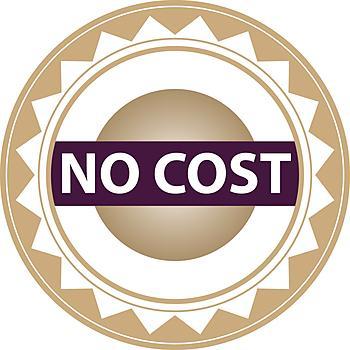Understanding No-Cost Loans

When I suggest no-fee loans to my clients, I’m often asked how it is possible to Refinance a loan without paying the closing costs. A loan without closing costs seems too good to be true, so many become skeptical. Below is a detailed explanation of how a no-cost loan works and the benefits it offers. (NOTE: City Creek mortgage does not charge you any closing costs. We are 100% compensated on a fixed income basis by our investors, not by our clients.)
A No-Fee Loan Explained:
There are always fees associated with doing a mortgage. Appraisers, title companies and underwriters all require payment for their services. On a typical $225,000 mortgage, the total for these is approximately $2,462. Then, there is either a cost or a credit associated with each interest rate. For example, a 3.75% interest rate may have a cost of 1%. Therefore, with a $225,000 loan, you will pay the following:
- Basic Closing Costs: $2,462
- Cost for Interest Rate of 3.75%: $2,250
TOTAL CLOSING COSTS: $4,712
Alternatively, there are also interest rates that offer a credit. The credit is then used to cover the basic closing costs incurred. If the credit is equal to or greater than the basic closing costs, then all of the fees are covered, making the loan no-cost. For example, an interest rate of 4.125% may offer a credit of 1.125% of the loan amount. This is demonstrated as follows:
- Basic Closing Costs: $2,462
- Credit for Interest Rate of 4.125%: ($2,531.25)
TOTAL CLOSING COSTS: ($69.25) - Difference in close costs: $4,712 – ($69.25) = $4,781.25
The Benefits of a No-Cost Loan
When comparing a loan that has closing costs with a no-cost loan, the loan amounts must be adjusted to reflect equal cash needed at closing. In other words, if there is a difference in loan costs between the two options of $4,781, the no-fee option will have a loan amount that is $4,781 lower. That will most effectively show the true cost of paying closing costs to obtain a lower interest rate. Therefore, we would compare a balance of $229,781 at a rate of 3.75% vs. a loan amount of $225,000 at a rate of 4.125%. The results are as follows:
- Full-Fee Option: $229,781 @ 3.75% has a P&I payment of $1,064.15
- No-Fee Option: $225,000 @ 4.125% has a P&I payment of $1,090.46
You will see that by paying $4,781 in closing costs, the monthly payment will be $26.31 lower than the no-fee option. Therefore, the breakeven point is 181 months ($4,781 / $26.31 = 181.71 months). If the loan will be in place for at least 15.1 years, then paying the fees for the lower rate may be the best option. However, that is very rare and does not account for the option to move the rate lower again should interest rates continue to fall without losing the amount paid for the loan. Nor does it take into consideration the additional tax benefits the higher interest rate of a no-cost loan offers.



